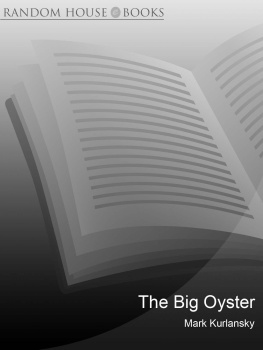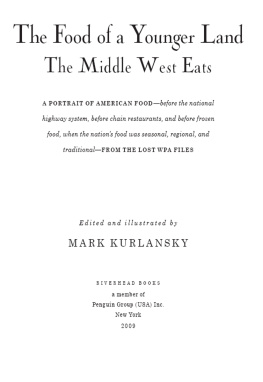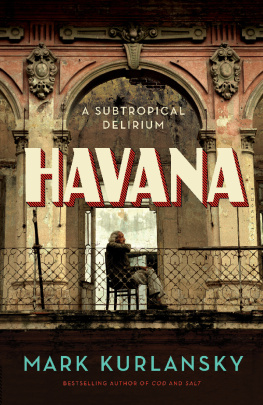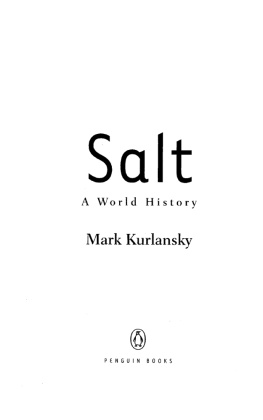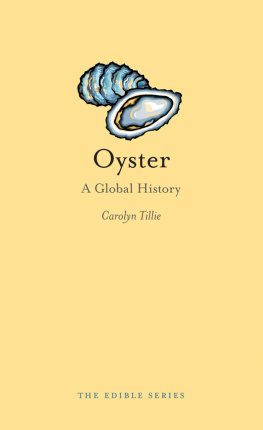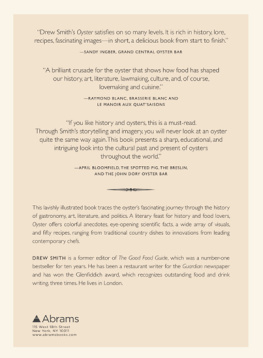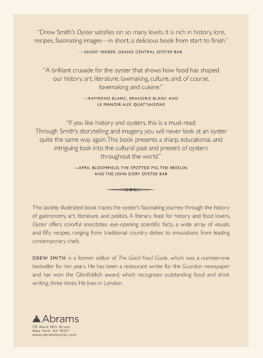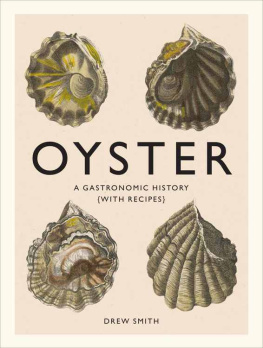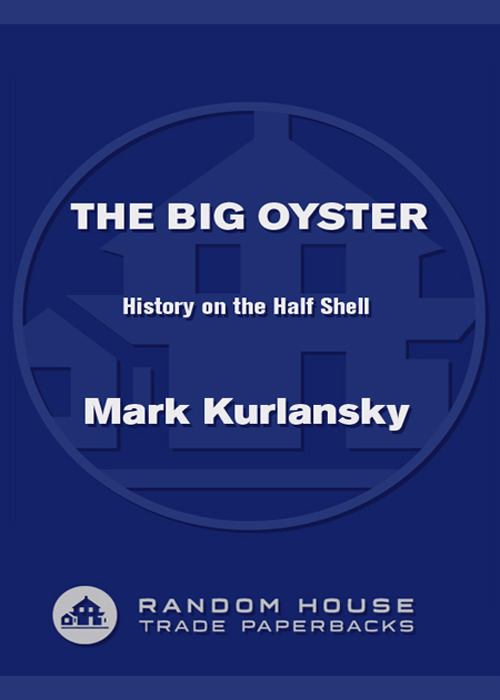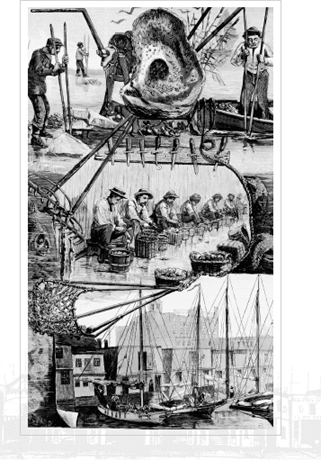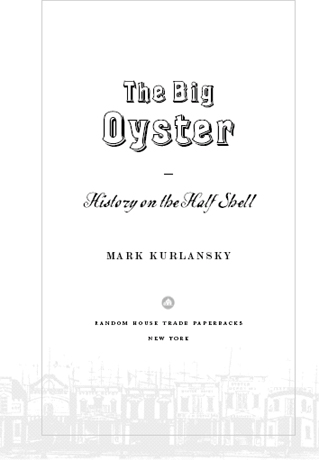Others will see the shipping of Manhattan north and west, and the heights of Brooklyn to the south and east.
Others will see the island large and small;
Fifty years hence, others will see them as they cross, the sun half an hour high,
A hundred years hence, or ever so many hundred years hence, others will see them,
Will enjoy the sunset, the pouring-in of the flood-tide, the falling-back to the sea of the ebb-tide.
WALT WHITMAN,
Crossing Brooklyn Ferry, 1856
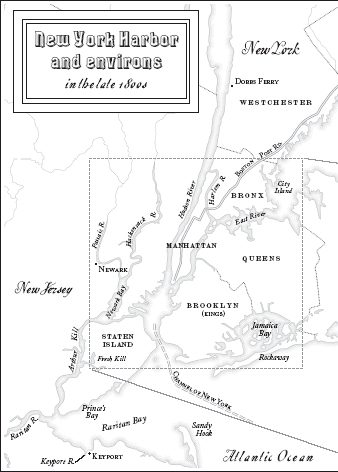
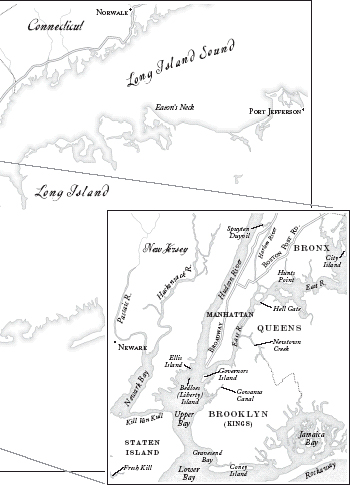
PREFACE
The Hard Shell of the City
To me New York is the most wonderful and most beautiful city in the world. All life is in it.
CHILDE HASSAM,
American Impressionist painter, 1889
T o anyone who is familiar with New Yorkers, it should not be surprising to learn that they were once famous for eating their food live. The fact that oysters are about the only food eaten alive is part of what makes them a unique gastronomic experiencethat and the sense that no other food brings us closer to the sea. Oysters spend their livesa dozen years if we left them alone, but only three or four because we dontsucking in seawater, extracting nutrients, and pumping it out again. There used to be enough oysters in New York Harbor to process all the water there, which is one of the reasons environmentalists want them back. And perhaps this is also why oysters taste like eating the sea.
New Yorkers seldom think of it this way, but they live in the estuary of the Hudson River, an expansive interconnected tidal system that also involves New Jersey and Connecticut. Damage anywhere in this system deteriorates the entire estuary.
Recently, while riding a train from Washington, D.C., to New York, I found myself along the part of New York Harbors shoreline that some people unkindly call the chemical coast. Many New Yorkers forget that this is part of their harbor because it is out of town in New Jersey. Usually when Im returning to New York, at this point I would look homeward to Manhattan at the never-disappointing skyline of the island where I live. Otherwise I would look out at smokestacks and pipes and flames from refineries. But for some reason, this one time, I looked instead right in front of me and realized that I was in a grassy wetlanda magnificent grassy wetland where egrets and herons could live. As the grass rolled in waves and the sun reflected on narrow waterways, I saw that this could have been a northern Everglades. By what act of blind insanity did people decide to build chemical plants, oil refineries, and heavy industry in a beautiful wetland that belonged to one of the worlds great waterways? Blind madness? It occurred to me that they had probably never really looked at it either.
The only thing New Yorkers ignore more than nature is history. They have a habit of not spending a great deal of time pondering the history of their city. That is because of a sense that it has always been more or less the same, or, as Edmund Wilson, one of the more venerated New Yorker writers of that magazines heyday, explained his waning enthusiasm for reading history in his old age, I know more or less the kind of things that happen.
The history of New York oysters is a history of New York itselfits wealth, its strength, its excitement, its greed, its thoughtlessness, its destructiveness, its blindness andas any New Yorker will tell youits filth. This is the history of the trashing of New York, the killing of its great estuary.
New York is a city that does not plan; it creates situations and then deals with them. Most of its history is one of greedily grabbing beautiful things, destroying them, being outraged about the conditions, tearing them down, then building something else even further from natures intention in their place. What could be more typical of New York than the Doorknob, a spot in New York Harbor that is contaminated from being used as a dumping ground for the trash created when the city tried to correct decades of neglect on the Lower East Side by tearing down the tenements to build housing projects.
One of the great New York paradoxes is that the metropolis is both unique and typical. Many of its stories are true for other cities as well. The oyster history of New York often matches that of other great oyster capitals such as Paris, and London on the oyster-encrusted estuary of the Thames. It is interesting that London, rich in its own oysters like New York, also destroyed them, whereas Paris, which was the commercial and consuming capital of oysters brought in from other regions, did more to preserve its beds.
Before the twentieth century, when people thought of New York, they thought of oysters. This is what New York was to the worlda great oceangoing port where people ate succulent local oysters from their harbor. Visitors looked forward to trying them. New Yorkers ate them constantly. They also sold them by the millions, supplying Chicago, St. Louis, Denver, and San Francisco, but also shipping to England, France, and Germany. As New York transportation improved, New York oysters traveled ever farther. In the nineteenth century the British credited New York with meeting their oyster needs when their own famous beds failed.
Oysters were true New Yorkers. They were food for gourmets, gourmands, and those who were simply hungry; tantalizing the wealthy in stately homes and sustaining the poor in wretched slums; a part of city commerce and a part of international trade.
If eating an oyster is tasting the sea, eating a New York oyster was tasting New York Harbor, which became increasingly unappealing. The oyster was New Yorkers link to the sea, and eventually it was lost. Today New Yorkers eat not as many oysters, but still quite a few, albeit from a dozen other places, and now when they think of the sea, they think of somewhere elseperhaps the eastern tip of Long Island or New England or even Florida. Though they live by the sea, they take vacations to go somewhere else to be by the sea. Of the many odd things about New Yorkers, there is this: How is it that a people living in the worlds greatest port, a city with no neighborhood that is far from a waterfront, a city whose location was chosen because of the sea, where the great cargo ships and tankers, mighty little tugs, yachts, and harbor patrol boats glide by, has lost all connection with the sea, almost forgotten that the sea is there? New Yorkers have lost their oyster, their taste of the sea. This is the story of how it happened.
PROLOGUE
A Good Time Coming
Fruges consumere nati [born to eat produce], may designate humanity elsewhere, but here the quotation may be out of place, for man seems born to consume oysters.
CHARLES MACKAY ON NEW YORK CITY,


